INSTITUT SUPERIEUR D'ANTHROPOLOGIE
INSTITUTE OF ANTHROPOLOGY
ONLINE COURSES / COURS A DISTANCE
FALL TERM : OCTOBER 2013
REGISTER NOW
PEROU -  They are equipped with a microcomputer, a GPS tracker, a compass, cameras and an altimeter, and can be easily programmed by using Google Maps to fly autonomously and return to base with vital data. "These aircraft are small in size, are equipped with high-precision video or photo cameras and go virtually unnoticed in the sky," said Andres Flores, an electrical engineer in charge of the UAV program at Peru's Catholic University. Flores heads a multidisciplinary team brainstorming the best ways to use drones for civilian purposes. "Up to now we have managed to use them for agricultural purposes, where they gather information on the health of the plants, and in archeology, to better understand the characteristics of each site and their extensions," Flores said. Some of the earliest human settlements in the Americas are found in Peru. There are thousands of archeological sites, many unexplored, dotting the Peruvian landscape, most of them pre-dating the Incas, a major civilization which was defeated by Spanish conquistadors in the 16th century. Along the dry coastline, where the main construction material was adobe brick, whole societies flourished. After centuries of abandon some of these ancient cities have deteriorated to the point that they are hard to distinguish in the sandy, hilly region. Archeologist Luis Jaime Castillo is using drones to help map the 1,300 year-old Moche civilization around San Idelfonso and San Jose del Moro, two sites on the Peruvian coast north of Lima. "We can convert the images that the drones provide into topographical and photogrammetry data to build three-dimensional models," Castillo told AFP. "By using the pictures taken by drones we can see walls, patios, the fabric of the city."
They are equipped with a microcomputer, a GPS tracker, a compass, cameras and an altimeter, and can be easily programmed by using Google Maps to fly autonomously and return to base with vital data. "These aircraft are small in size, are equipped with high-precision video or photo cameras and go virtually unnoticed in the sky," said Andres Flores, an electrical engineer in charge of the UAV program at Peru's Catholic University. Flores heads a multidisciplinary team brainstorming the best ways to use drones for civilian purposes. "Up to now we have managed to use them for agricultural purposes, where they gather information on the health of the plants, and in archeology, to better understand the characteristics of each site and their extensions," Flores said. Some of the earliest human settlements in the Americas are found in Peru. There are thousands of archeological sites, many unexplored, dotting the Peruvian landscape, most of them pre-dating the Incas, a major civilization which was defeated by Spanish conquistadors in the 16th century. Along the dry coastline, where the main construction material was adobe brick, whole societies flourished. After centuries of abandon some of these ancient cities have deteriorated to the point that they are hard to distinguish in the sandy, hilly region. Archeologist Luis Jaime Castillo is using drones to help map the 1,300 year-old Moche civilization around San Idelfonso and San Jose del Moro, two sites on the Peruvian coast north of Lima. "We can convert the images that the drones provide into topographical and photogrammetry data to build three-dimensional models," Castillo told AFP. "By using the pictures taken by drones we can see walls, patios, the fabric of the city."
http://www.huffingtonpost.com/2013/08/15/peru-drones_n_3759298.html
MEXIQUE – 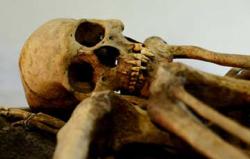 Ario de Rayon - Mexican National Anthropology and History Institute, or INAH, experts will reconstruct the face of an individual who lived some 700 years ago from pre-Columbian skeletal remains, officials said. The skeleton was recovered 35 years ago in the western Mexican state of Michoacan and belonged to the elite of the western culture, according to studies made by the INAH and the National Autonomous University of Mexico, or UNAM. Studies have been made of the facial bones of the skull, found in a field of the Ario de Rayon municipality and taken to the Michoacan Regional Museum, to determine the characteristics of the individual it belonged to, INAH restorer Luisa Mainou, said. The idea of the reconstruction is to obtain additional facts about the individual who lived during the Late Post-Classic Period (1300-1500 A.D.), Mainou said. Research done by physical anthropologist Jorge Gomez determined that the skull belonged to a male individual who died between ages 22-24, was slim of build and some 1.6 meters (5 feet 3 inches) tall, and who did no physical labor. The analysis also showed that he was an extremely healthy person who was very probably sacrificed, a hypothesis that will be either confirmed or dismissed later, Mainou said.
Ario de Rayon - Mexican National Anthropology and History Institute, or INAH, experts will reconstruct the face of an individual who lived some 700 years ago from pre-Columbian skeletal remains, officials said. The skeleton was recovered 35 years ago in the western Mexican state of Michoacan and belonged to the elite of the western culture, according to studies made by the INAH and the National Autonomous University of Mexico, or UNAM. Studies have been made of the facial bones of the skull, found in a field of the Ario de Rayon municipality and taken to the Michoacan Regional Museum, to determine the characteristics of the individual it belonged to, INAH restorer Luisa Mainou, said. The idea of the reconstruction is to obtain additional facts about the individual who lived during the Late Post-Classic Period (1300-1500 A.D.), Mainou said. Research done by physical anthropologist Jorge Gomez determined that the skull belonged to a male individual who died between ages 22-24, was slim of build and some 1.6 meters (5 feet 3 inches) tall, and who did no physical labor. The analysis also showed that he was an extremely healthy person who was very probably sacrificed, a hypothesis that will be either confirmed or dismissed later, Mainou said.
http://www.hispanicallyspeakingnews.com/latino-daily-news/details/mexican-experts-to-reconstruct-face-of-pre-columbian-man/26447/
NEPAL – 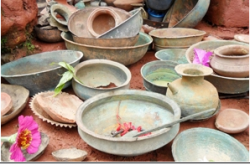 Dewalhat - Thousands of years old archaeological artefacts have been found in Dewalhat, located in the south of Baitadi district headquarters. Dozens of utensils of gold, silver, copper, iron, bronze metals and earthenware were found while renovating a Dewal (temple) built in ancient times. Various items of various shapes and sizes, three large swords, idols and some paddy in some utensils have been found in Dewalhat. The place is linked with the history of the Puranic stories of the Pandavas-Kauravas battle of the Mahabharata some 5,000 years ago. According to Puranic legends, the Pandavas stayed there a night during the war, and built seven temples in the same night, said Bhatta.
Dewalhat - Thousands of years old archaeological artefacts have been found in Dewalhat, located in the south of Baitadi district headquarters. Dozens of utensils of gold, silver, copper, iron, bronze metals and earthenware were found while renovating a Dewal (temple) built in ancient times. Various items of various shapes and sizes, three large swords, idols and some paddy in some utensils have been found in Dewalhat. The place is linked with the history of the Puranic stories of the Pandavas-Kauravas battle of the Mahabharata some 5,000 years ago. According to Puranic legends, the Pandavas stayed there a night during the war, and built seven temples in the same night, said Bhatta.
http://www.thehimalayantimes.com/fullNews.php?headline=Archeological+artefacts+of+Mahabharata+time+found+in+Baitadi&NewsID=387319
ROYAUME UNI - 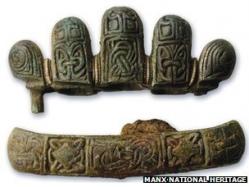 Isle of Man - Fragments of a 1,100 year-old Viking sword, discovered by metal detector enthusiasts on the Isle of Man, have gone on display in North Yorkshire. The highly decorated sword pommel, which experts have dated to around AD900, was found near Ballaugh in 2008 by Rob Farrer and Daniel Crowe. Head of archaeology at Manx National Heritage, Allison Fox, said it could be the "very sword which belonged to the first Viking ever to settle in the Isle of Man". She added: "It is around 1,100 years old. We haven't got the whole sword but what we do have is the most decorated part which tells us when and where it hails from, probably Norway.
Isle of Man - Fragments of a 1,100 year-old Viking sword, discovered by metal detector enthusiasts on the Isle of Man, have gone on display in North Yorkshire. The highly decorated sword pommel, which experts have dated to around AD900, was found near Ballaugh in 2008 by Rob Farrer and Daniel Crowe. Head of archaeology at Manx National Heritage, Allison Fox, said it could be the "very sword which belonged to the first Viking ever to settle in the Isle of Man". She added: "It is around 1,100 years old. We haven't got the whole sword but what we do have is the most decorated part which tells us when and where it hails from, probably Norway.
http://www.bbc.co.uk/news/world-europe-isle-of-man-23694990
ROYAUME UNI – Maryport - A new dig began this week on the site of the Roman settlement at Maryport. The dig, which will last until September 27, is looking at structures believed to be homes and shops either side of the main street north east of the Roman fort, near to the Senhouse Roman museum. So far, test trenches have been dug and one has now been expanded to form an open-area excavation which has the outline of one of the buildings and part of the Roman street. The Maryport civilian settlement is the largest currently known along the Hadrian’s Wall frontier. Previous detailed geophysical surveys have shown lines of buildings, thought to be houses and shops, either side of the main street running from the north east gate of the fort.
http://www.newsandstar.co.uk/news/new-dig-underway-at-roman-site-in-maryport-1.1077297
USA – Boston - Archaeologists will be digging into Boston’s past when the city begins its first archaeological dig of Training Field Park in Charlestown’s Winthrop Square. The City of Boston’s archaeologist Joseph Bagley, his team, and volunteers will excavate about 30 small test units over three weeks in September as part of a cultural landscape report designed to guide officials in how best to preserve the property and manage the site for future proposed renovations. Winthrop Square, located near the Bunker Hill Monument and along the Freedom Trail, was Charlestown’s common and has remained a part of the neighborhood’s history. The square served as a training ground for colonial militia in the 1640s and figured in the Battle of Bunker Hill in 1775, according to the Boston Parks and Recreation Department. In the early 19th century it was the site for a firehouse, munitions depot and schoolhouse; it has served as a park since the 1850s. Archaeologists hope to find deposits and artifacts dating back to Colonial Charlestown and the Revolutionary War. The site is considered eligible for listing on the National Registry of Historic Places.
http://www.boston.com/yourtown/news/charlestown/2013/08/archaeologists_to_dig_into_history_of_winthrop_square.html
ROYAUME UNI – 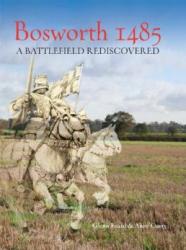 Bosworth - For generations it was thought that the Battle of Bosworth – which changed the course of English history - took place at a site in Leicestershire called Ambion Hill. There is a battlefield heritage centre there. However, historians began to cast doubt on the traditional location for the battle. In 2005 Dr Foard was called in by the Leicestershire County Council to settle the matter. It was to be a long and difficult project but in March 2009, a single 30mm lead ball was found. Many more finds followed and Bosworth would yield more round shots than archaeological surveys on any other late medieval European battlefield. By analysing documentary evidence, reconstructing the historic terrain and undertaking systematic archaeological surveys using metal detectors, Dr Foard deduced that Bosworth was not fought on the heights of Ambion Hill but two miles away in low lying, ground, close to a Roman Road and beside a marsh known later as Fen Hole. Richard III might have chosen this terrain because he was an enthusiast for artillery and on this flat ground it could be used to best effect. But Henry's troops simply manoeuvred, behind the protection of the marsh, to attack the flank of Richard's army and so avoid the heavy artillery fire. Other finds included the clinching evidence of a silver-gilt badge in the shape of a boar, the emblem of the doomed king. It would almost certainly have been worn by one of the knights who rode with Richard to his death on his fateful last cavalry attack.
Bosworth - For generations it was thought that the Battle of Bosworth – which changed the course of English history - took place at a site in Leicestershire called Ambion Hill. There is a battlefield heritage centre there. However, historians began to cast doubt on the traditional location for the battle. In 2005 Dr Foard was called in by the Leicestershire County Council to settle the matter. It was to be a long and difficult project but in March 2009, a single 30mm lead ball was found. Many more finds followed and Bosworth would yield more round shots than archaeological surveys on any other late medieval European battlefield. By analysing documentary evidence, reconstructing the historic terrain and undertaking systematic archaeological surveys using metal detectors, Dr Foard deduced that Bosworth was not fought on the heights of Ambion Hill but two miles away in low lying, ground, close to a Roman Road and beside a marsh known later as Fen Hole. Richard III might have chosen this terrain because he was an enthusiast for artillery and on this flat ground it could be used to best effect. But Henry's troops simply manoeuvred, behind the protection of the marsh, to attack the flank of Richard's army and so avoid the heavy artillery fire. Other finds included the clinching evidence of a silver-gilt badge in the shape of a boar, the emblem of the doomed king. It would almost certainly have been worn by one of the knights who rode with Richard to his death on his fateful last cavalry attack.
http://phys.org/news/2013-08-archaeologist-real-bosworth.html
ROYAUME UNI – 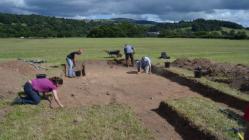 Llwydfaen Farm - The remains of a Roman temple have been found in the Conwy Valley by a television film crew working on a new archaeology series. A group of archaeologists were digging at the site on Llwydfaen Farm, looking for what they believed was a lost Norman church. But after removing the turf and dust from the foundations, the team discovered that it was the remains of a much older building. The producer of the archaeological series, Morgan Hopkins, said: "I was quite certain that we would discover a Norman church in Llwydfaen but it became obvious as we were digging and from the discoveries that this was a Roman building. "We discovered six silver Roman coins, countless pieces of slate and Roman nails as well as pieces of Roman pottery. The most probable explanation is that there was a temple here, built in the fourth century, but it's definitely unique here in Wales."
Llwydfaen Farm - The remains of a Roman temple have been found in the Conwy Valley by a television film crew working on a new archaeology series. A group of archaeologists were digging at the site on Llwydfaen Farm, looking for what they believed was a lost Norman church. But after removing the turf and dust from the foundations, the team discovered that it was the remains of a much older building. The producer of the archaeological series, Morgan Hopkins, said: "I was quite certain that we would discover a Norman church in Llwydfaen but it became obvious as we were digging and from the discoveries that this was a Roman building. "We discovered six silver Roman coins, countless pieces of slate and Roman nails as well as pieces of Roman pottery. The most probable explanation is that there was a temple here, built in the fourth century, but it's definitely unique here in Wales."
http://www.itv.com/news/wales/update/2013-08-15/remains-of-roman-temple-found-in-the-conwy-valley/